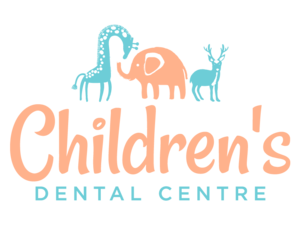What are the best materials for primary pulpotomies?
Although the management of dental caries is moving towards a minimally invasive approach, in many cases, pulpotomies in primary teeth are still indicated. Preservation of the posterior primary dentition, particularly the E’s, is paramount for normal growth and development of the mouth and jaws. This month’s post will review the available pulpotomy materials to assist you in achieving the best success rates possible. Future blogs will address the indications for pulpotomies and how to do one.
Haemostasis and ready for medicament placement.
There have been a range of pulpotomy materials that have been used over several decades. Thankfully, a great deal of research has been conducted on this topic, allowing us to outline the success rates very clearly for different materials. The most common materials used are: Mineral Trioxide Aggregated (MTA), Formocresol (FC), Ferric Sulphate (FS) and Calcium Hydroxide (CaOH). So, what materials are should we be using?
Mineral Trioxide Aggregate
NeoMTA a product from NuSmile
Mineral Trioxide Aggregate is a biocompatible, non-toxic material that stimulates tissue regeneration and forms an excellent seal. However, its primary barrier to widespread use were previously the high cost and prolonged setting time. These have reassuringly been addressed.
It is the most successfully pulpotomy material by a long margin. There is a significant reduction in clinical and radiological failures at 12 and 24 months. As such, this is now the gold standard material. (1)
Formocresol
Formocresol was previously the gold standard for many years given its high success rates. However, concerns have been raised about its carcinogenicity, mutagenicity and toxicity. Even though, there is limited evidence that it would have any impact in the doses recommended for a pulpotomy (ie a one-in-five dilution of Buckley’s formula) used under rubber dam, we now have MTA which is a safer and more successful material. (1)
Ferric Sulphate
Ferric sulphate (FS) is a common dental haemostatic agent. It aims to form a blood barrier (clot) to prevent toxic materials subsequently used from damaging the remaining vital pulp. There are no concerns regarding toxicity or harmful effects from FS recorded in the dental literature. (1)
Ferric sulphate’s success is lower than MTA, but higher than CaOH. However; it is associated with pathological root resorption and internal resorption. (1) Furthermore, one of the primary tools to assess the suitability of a pulpotomy is haemostasis within 5 minutes. If FS is placed prior to this, it will result in haemostasis and may give you a false sense of confidence in the health of the pulp.
Calcium Hydroxide
Calcium Hydroxide is an alkaline material (pH ~ 12 – 13) and aims to cause sterile necrosis in a narrow band of pulpal tissue with underlying regeneration. However, its success is significantly inferior to other available pulpotomy materials principally due to the fact that it causes necrosis to pulpal cells and can result in internal resorption and dystrophic calcification. As such, it is recommended that is should not be used in primary pulpotomies. (1)
GIC??
One material that we see used is GIC placed directly on the pulp. There is little-to-no evidence that this will result in success and a pulpal medicament needs to be placed prior.
A Major Determinant of Success
The restoration you chose to place over the pulpotomy is arguably the most important factor that will determine the success of the procedure. Without a doubt, a stainless-steel crown or zirconia crown needs to be placed. Any other material has terribly high failure rates and will essentially negate any of the effort you put into perfecting the procedure or using the highest quality medicaments.
Summary of Materials
If you are performing pulpotomies on a reasonably regular basis, we strongly encourage you to use MTA. Any other material will result in lower success rates, which is difficult to stomach and will result in additional costs and procedures for your practice. Its previous barriers, principally cost and setting time, have decreased substantially. For example, we use NeoMTA (NuSmile) and find it is an easy material to use and cost effective. This is even if bulkbilling at CDBS rate (we have no financial interest here).
However, if you find yourself in the situation that you do not have MTA available, you could place FC, an agent that is likely to be discontinued for use in Australia and harder to access, or FS and accept the increased risk of failures. Another alternative is to refer the patient to a paediatric dentist for the pulpotomy and crown and have them returned to you for ongoing care.
We hope this is of some help to you (and we promise we will do a post on how to do a pulpotomy!)
All the best
Sarah and Tim
What was the primary evidence for this article? A Cochrane review in 2018 included 87 Randomised controlled trials (RCTs) which is very impressive. It does need to be noted that there was a high or unclear risk of bias in many of the RCTs. However, this is the most conclusive evidence we have regarding these materials.
Smaïl‐Faugeron, V, Glenny AM, Courson F, Durieux P, Muller‐Bolla M, Fron Chabouis H. Pulp treatment for extensive decay in primary teeth. Cochrane Database of Systematic Reviews 2018.



